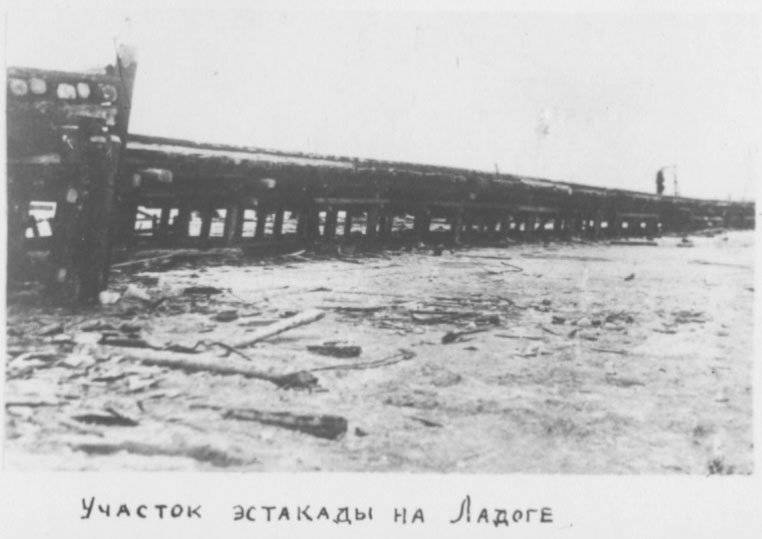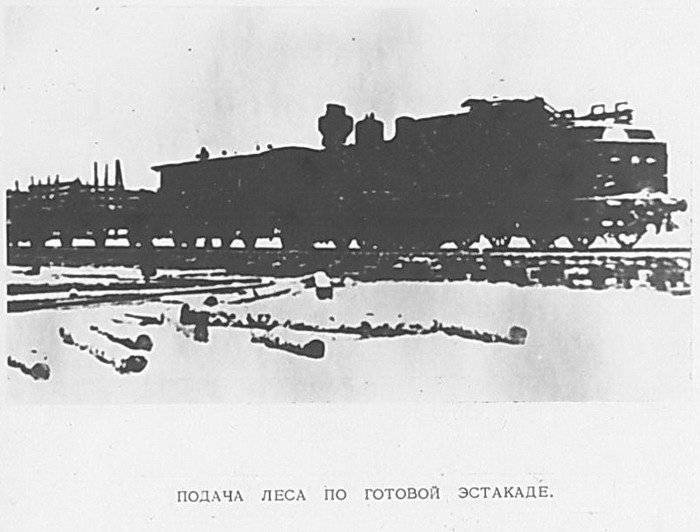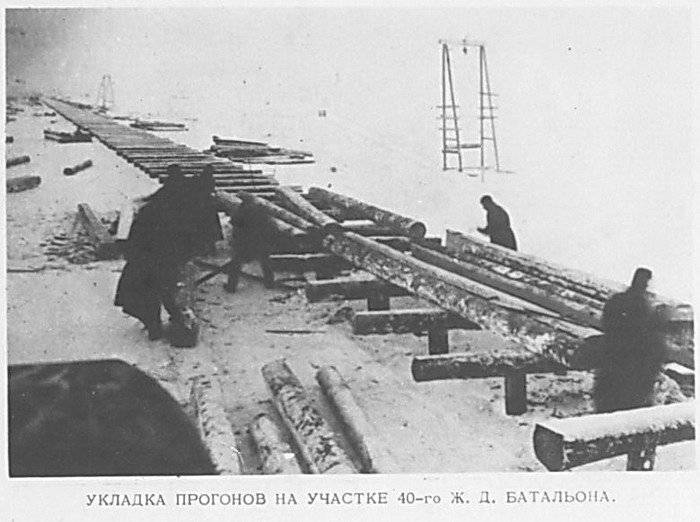Shlisselburg highway - the iron road of life in besieged Leningrad
The Soviet command from the first days tried to break through the blockade, fighting continued for a year and a half, many fighters were killed under enemy fire, a large number of military equipment was destroyed - all unsuccessfully. Only 18 in January 1943 of the year were able to unite the armies of the Leningrad and Volkhov fronts in the Shlisselburg region, breaking the blockade of Leningrad. These facts are familiar to all. However, few people know that when the whole city celebrated a joyous event, the State Defense Committee adopted a resolution on the construction of a small but very important railway line, 33 kilometer long, capable of connecting the city with the Great Land.

German propaganda wrote that a narrow strip of swamps on the front line, which the Russians were able to win, would not be able to help the city. But the Soviet commanders knew how important these peatlands stretched along Ladoga. They also understood that if no action was taken, the enemy would again try to close the blockade ring. It was clear that it was necessary to regroup the troops, bring more military equipment, ammunition, and provide the residents of Leningrad and the troops with food. Thus, the new segment of the path had to connect the internal railway network with the external one leading to Volkhovstroy. It was this small railway line from Shlisselburg to the town of Polyany that was called the Immortality Corridor, the Road of Life.
Immediately after the blockade was broken, all necessary resources were allocated. The task seemed almost impossible, because the railway had to be built in just 20 days. In peacetime, such a construction would take at least a year. Headed the construction of I. G. Zubkov, who before the war led the construction of the metro in Leningrad.
And in January frosts about five thousand people began to implement this daring plan. People chopped down trees in the surrounding forests, made rails and sleepers. Surveyors, railway workers, and the military worked almost around the clock. The construction was complicated by the fact that the area where the new branch was supposed to go - the former Sinyavino peat development - was completely unsuitable for the railway: swampy, rugged. Due to the lack of roads it is difficult to transport materials, mines and unexploded shells are hidden in the ground. The swamp needed to be filled up, in some places it was necessary to lift the embankment - the soil was carried in sacks from quarries on sledges, pieces of roofing iron, and adapted for this purpose all that is possible.

The construction of the new line was decided to be carried out according to simplified technical conditions, and to reach the Shlisselburg station, to build a pile-ice bridge across the Neva. Piles were driven into the bottom of the river, sleepers were frozen from above directly into the ice, and rails were laid on them. The bridge had a length of 1300 meters, it was designed for operation only in winter.
Winter 1943 of the year stood out harsh: severe frosts, snowstorms, piercing wind. In addition, about 5-6 kilometers from the construction site, on Sinyavino Heights, the enemy troops sat down, who at first could not understand what the Russians were doing, and when they did, they began to fire at the construction site with continuous artillery fire. At the same time, the newly erected sections of the road were often destroyed. The Soviet anti-aircraft guns, as best they could from the ground, covered the construction site from enemy shelling, fighters did it from the air. And in record time - for 17 days, three days earlier than designated, the Shlisselburg highway was built.
The first train with food went to Leningrad on February 7, people were crying for joy, hats were flying up! Led the train from the Bolshoi land senior engineer depot Volkhovstroy I. P. Pirozhenko. After this day, food and other goods were regularly brought to the city. But few knew what price it was given.
Hitler was told about a new branch of the railway built by the Russians. The Fuhrer demanded to bomb the highway, which every day trains, delivered food and ammunition to the blocked city. German officers complained that the trains were being carried out by suicide bombers released from Soviet prisons, which even the devil himself could not care for. But they were greatly mistaken, because the machinists, who were recalled from the front, were driving along the “corridor of death”, many were taken to Leningrad by plane. Young girls - yesterday's Leningrad schoolgirls who survived the blockade, in the direction of the Komsomol, became firemen, assistant drivers, switchmen and conductors. For the movement of trains on the Shlisselburg highway, the 48-I locomotive column was created. From a special reserve NKPS identified thirty powerful locomotives.
Because of the constant bombardment by the Nazis, trains could only move at night with dimmed lights. Most of the “corridor” was clearly visible from the Sinyavinsky heights available to the enemy aviation spotlights and sound catchers made it easy to spot the train. From the explosions of shells the earth stood on end, and the rails spun like a wire. The railway track had to be repaired several times a day, whole trains flew downhill. During the night, only three trains could pass to Leningrad and the same back. For a long time they could not increase their number.

It would be possible to improve the situation a bit with the help of automatic locking, but its construction required time and money. Then it was decided to temporarily create the simplest signal posts, a kind of “live traffic lights”. The essence of this “live blocking” was that special posts were installed at a distance of 2-3 kilometers from each other, where there was a traffic light - a kerosene lamp with red and green glass. The person driving such a traffic light turned the lamp red or green towards the train.
In the presence of “live blocking”, the trains could now follow one after the other, the 20-25 trains passed during the night. Food was transported to the city in trains, and equipment and various materials were sent back, and the disabled population was evacuated. Their movement was covered by anti-aircraft gun platoons and airplanes. Two weeks after the end of the construction of the Schlisselburg highway, the ration of Leningradians was equal to that of Moscow. Residents of the city on cards began to receive cereals, butter, fresh meat.
After the opening of the movement of the Shlisselburg-Polyany branch, the construction of another high-water railway bridge across the Neva on pile supports with a fence began at the same time. After the construction of the permanent bridge, they wanted to disassemble the pile-ice bridge, but then they decided to leave it. The fact is that a new bridge was often subjected to shelling, and the movement of trains had to be stopped. Therefore, the temporary building was left as a backup, especially since its construction was relatively simple and was restored as soon as possible.
In addition, the 19 of March 1943 was decided by the Military Council of the Leningrad Front on the Shlisselburg - Polyana highway to build an 18 bypass for 5 kilometers. This route took place in 2-3 kilometers from the main road. He was not only farther than the front line, but was also better covered due to the terrain and shrubs. Movement on it began on 25 on April 1943 of the year, by the end of May, 35 had arrived in Leningrad per day. The city finally came to life, and on the Leningrad front they quickly forgot what a “shell ration” was, which the fighters received from the very beginning of the blockade.
Despite the heroism and bravery of railway workers, the losses were very high. From the locomotive column in 600 people, every third died, while it is impossible to calculate how many others died during the construction, defense and restoration of the railway of Life. All of them fearlessly fulfilled their duty, ensuring the continuity of the movement of trains along the Shlisselburg-Polyana highway.
Information